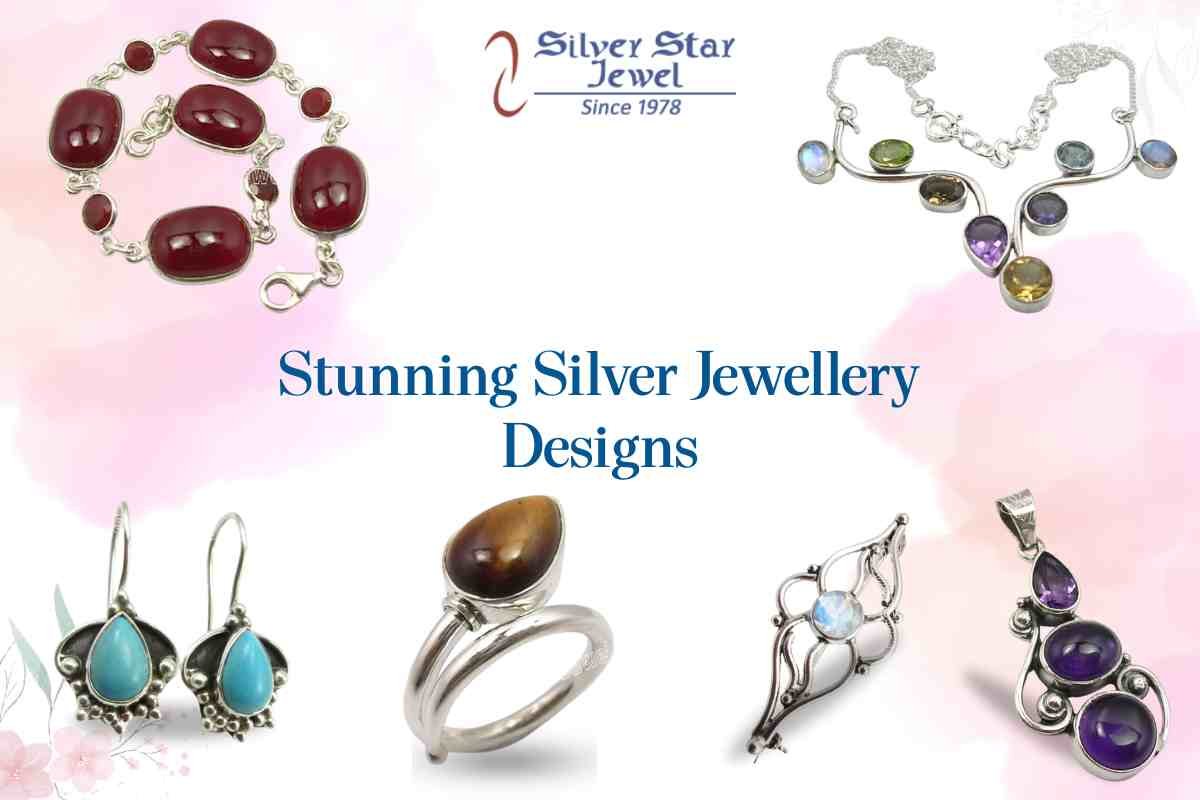The allure of silver jewellery is timeless. Its cool, luminous shine and versatile nature make it a favorite among designers and wearers alike. Whether you’re an aspiring artisan, a boutique owner looking to create a custom line, or a hobbyist wanting to turn your passion into a profession, understanding the journey from a simple idea to a finished piece is fascinating. The process combines artistic vision with meticulous craftsmanship, often supported by a skilled Silver Jewellery manufacturer. Let’s walk through the eight essential steps to bring a stunning silver jewellery design to life.
Step 1: Inspiration and Conceptualization
Every beautiful piece of jewellery begins with an idea. Inspiration can strike from anywhere: the intricate patterns of nature, the geometric lines of modern architecture, a historical era, or a personal story you want to tell. Start by creating a mood board. Collect images, color swatches, fabric textures, and even words that resonate with your concept. This stage is purely about creativity. Don’t limit yourself; sketch freely and let your imagination guide your hand. The goal is to translate a feeling or a vision into a tangible design form.
Step 2: Sketching and Design Refinement
Once you have a core concept, it’s time to put pencil to paper. Detailed sketching is crucial. Draw your design from multiple angles—top, side, and perspective views. This helps in visualizing the piece in three dimensions. Pay close attention to proportions, balance, and how the piece will sit on the body. During this phase, consider the wearability and comfort of the design. After initial sketches, refine your drawing until it clearly represents your final vision. This detailed sketch will become the blueprint for the entire creation process.
Step 3: Material Selection
The choice of materials will define the character and quality of your jewellery. The foundation, of course, is the silver itself. 925 sterling silver jewelry supplier networks are vital here, as 925 sterling silver (92.5% pure silver and 7.5% other metals, usually copper) offers the perfect balance of beauty, strength, and tarnish resistance. Next, decide if your design will incorporate gemstones. This is where partnering with a reliable Silver Gemstone Jewelry Supplier becomes invaluable. They can provide ethically sourced gems, advise on which stones are durable enough for specific designs (like rings versus pendants), and ensure consistent quality and color.
Step 4: Technical Drawing and Model Making
For precision, especially with complex designs or production, designers create a technical drawing. This drawing shows exact dimensions, thicknesses, and specifications for stone sizes and settings. Traditionally, artisans hand-carved a master model from wax or a special alloy using this technical drawing. Today, many designers and manufacturers use Computer-Aided Design (CAD) to build a digital 3D model. This technology delivers incredible precision and lets them easily tweak the design before producing it.
Step 5: Casting the Piece
Casting is the magic step where the design becomes a real metal object. The jeweler uses a wax model (or a 3D-printed resin model) to create a mold. They then fill this mold with molten sterling silver through a process called investment casting, also known as lost-wax casting. After the metal cools and solidifies, the jeweler breaks the mold to reveal a rough version of your jewelry design in solid silver. When they cast multiple pieces together, this rough casting is called a “tree.
Step 6: Assembly and Stone Setting
After casting, the individual pieces are cut from the tree. If the design has multiple components, like linking chains or attaching clasps, they are carefully soldered together by a skilled jeweler. The next critical stage is stone setting. A master setter meticulously places each gemstone into its designated spot. There are various setting styles—prong, bezel, pave, and channel—each requiring a high level of skill to ensure the stones are secure and displayed to their best advantage. This step brings incredible sparkle and life to the piece.
Step 7: Polishing and Finishing
This step transforms the rough-cast metal into a shining masterpiece. The piece undergoes several stages of polishing. It starts with “pre-polishing” or filing to remove any casting seams and surface imperfections. Then, it is polished with increasingly fine abrasives and polishing wheels to achieve the desired finish. The finish can be a high, mirror-like shine, a soft satin (matte) look, or even a textured effect. A hallmark of quality finishing, like the kind you’d find from a dedicated Silver Jewellery manufacturer, is that every surface, even those not immediately visible, is smooth and refined.
Step 8: Quality Control and Hallmarking
The final step is a rigorous quality check. Each piece undergoes meticulous inspection for flaws in the metal, the security of the stone settings, the function of clasps, and the overall finish. Jewelers often stamp an official hallmark on sterling silver. This hallmark is a guarantee of authenticity, certifying that the metal meets the legal standard of 925 sterling silver. This stamp assures the customer of the quality and value of their jewellery. Silver Star Jewels exemplifies this commitment to quality, ensuring every piece that leaves their workshop meets the highest standards of craftsmanship and material integrity.
Conclusion
Creating a stunning piece of silver jewellery is a journey of passion, precision, and patience. It moves from the abstract spark of an idea through meticulous design, careful material selection, and skilled craftsmanship. Each step, from the first sketch to the final polish, is integral to producing a piece that is not just an accessory, but a wearable work of art. Understanding this process deepens our appreciation for the jewellery we wear and the artisanal skill behind it. Whether you create yourself or collaborate with experts, this roadmap can help you navigate the beautiful and complex world of jewellery design.
Related Reads
- Tips for First-Time International Travelers: What You Need to Know
- Effective Email Safety Measures for Small Business Owners
- Using Pivot Points to Identify Key Support and Resistance Levels in CFDs
- Gold Card Supervisor – Complete Guide for Construction Leaders
- Drill Chuck for 775 Motor – Reliable & Precision Tool for DIY Projects | TECHDELIVERS



